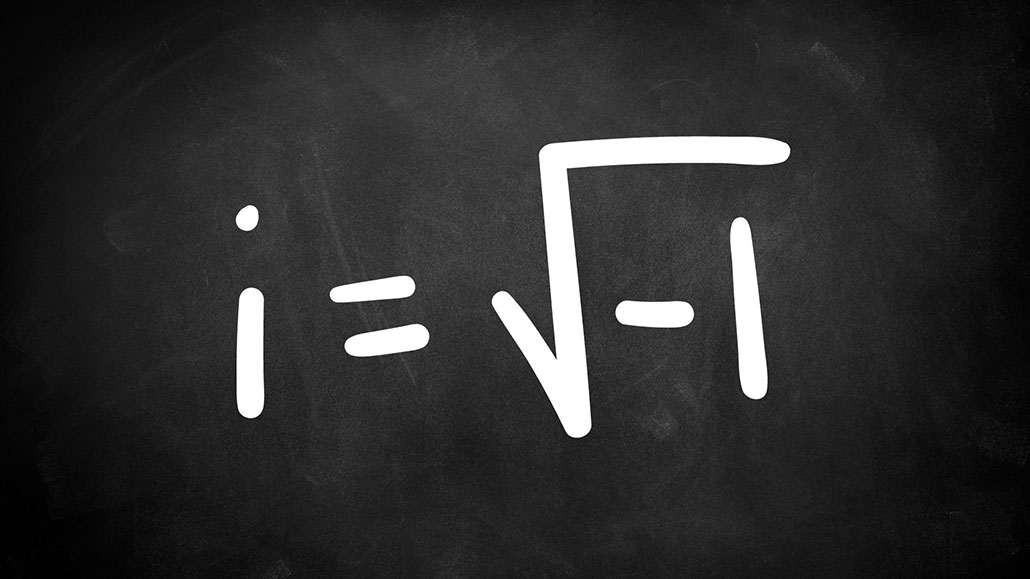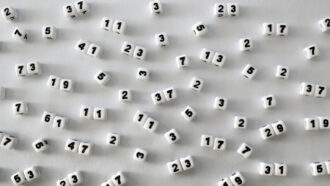Scientists Say: Imaginary Number
These weird numbers can multiply themselves into reality

Imaginary numbers are represented by the symbol i. The symbol i represents the square root of -1.
StillFX/Getty Images Pro/CanvaPro; vitalintent/CanvaPro
Imaginary number (noun, “Ee-MAH-juh-neh-ree NUM-ber”)
An imaginary number is a kind of number that allows us to solve math problems that involve taking the square root of a negative number. They’re called “imaginary” because they don’t count or measure things, the way real numbers do.
All numbers you use to count or measure things in a typical day are known as real numbers. Simple numbers such as 1, 2 and 3 are real numbers. So are fractions and negative numbers. You can place real numbers on a number line.
But imaginary numbers are different. You can’t point out where an imaginary number would lie on a standard number line. Despite that, imaginary numbers aren’t make-believe. You can multiply, divide, add and subtract imaginary numbers just like real ones.
Imaginary numbers come into play when you need to take the square root of a negative number. Taking the square root of positive numbers is straightforward. A number’s square root is the number that, when multiplied by itself, gives the original number. For example, the square root of four is two. That’s because 2 × 2 = 4.
But taking the square root of a negative number is a little different. Consider -4, for instance. No number exists that you can multiply by itself to get -4. You might think that -2 multiplied by -2 should give you -4. But following the rules of mathematics, if you multiply two negative numbers, your result is a positive number. You cannot take the square root of a negative number.
To solve this problem, mathematicians hundreds of years ago defined a new type of number — imaginary numbers, represented by the symbol i. The symbol i represents the square root of negative 1, or -1. Mathematically, that looks like this:
i = √-1
Here’s the important part: if you multiply i by itself, you get -1.
i × i = -1
And -1 is a real number, not an imaginary one. So, equations using imaginary numbers can sometimes give non-imaginary answers.
We can use i to make an imaginary number answer for the square root of -4:
2i = √-4
That 2i is an imaginary number. It’s a placeholder, of sorts. But multiply it by itself and you get -4. That’s a real number.
Imaginary numbers make much of today’s technology possible. That’s because they play an important part in modeling the behavior of waves — such as light waves and sound waves. These kinds of waves transmit the information we receive through devices such as cell phones and other wireless technologies.
In a sentence
Some math problems in quantum physics can only be solved by using imaginary numbers.
Check out the full list of Scientists Say.

Educators and Parents, Sign Up for The Cheat Sheet
Weekly updates to help you use Science News Explores in the learning environment
Thank you for signing up!
There was a problem signing you up.







